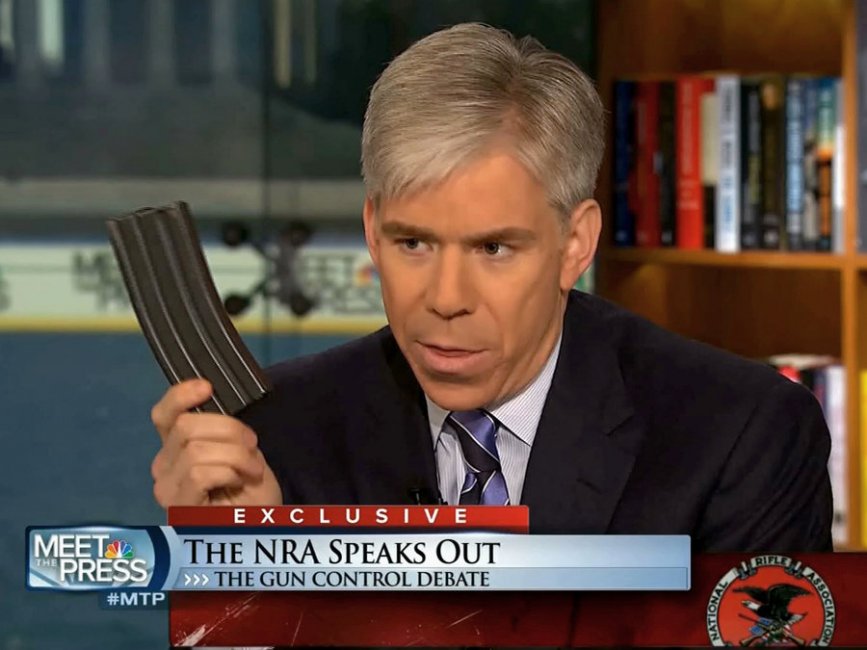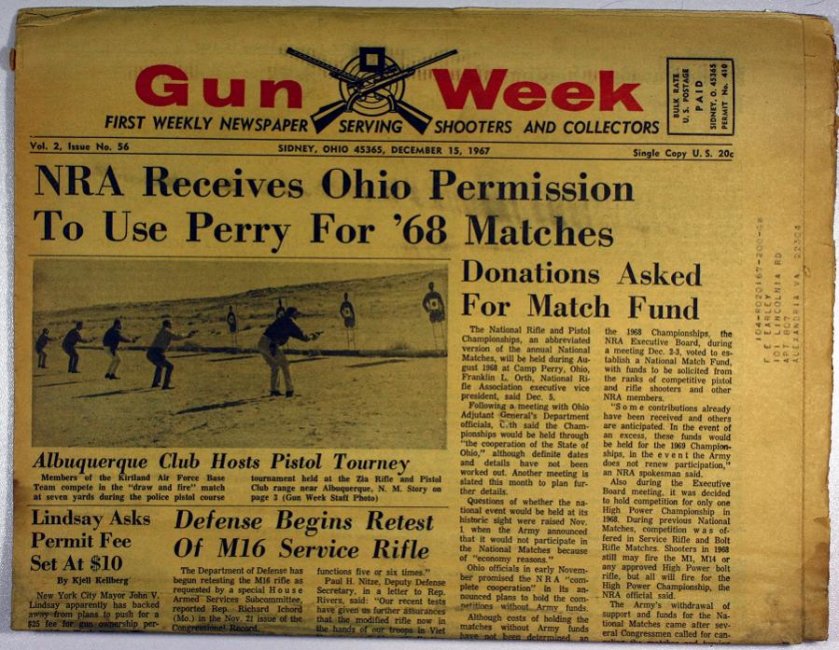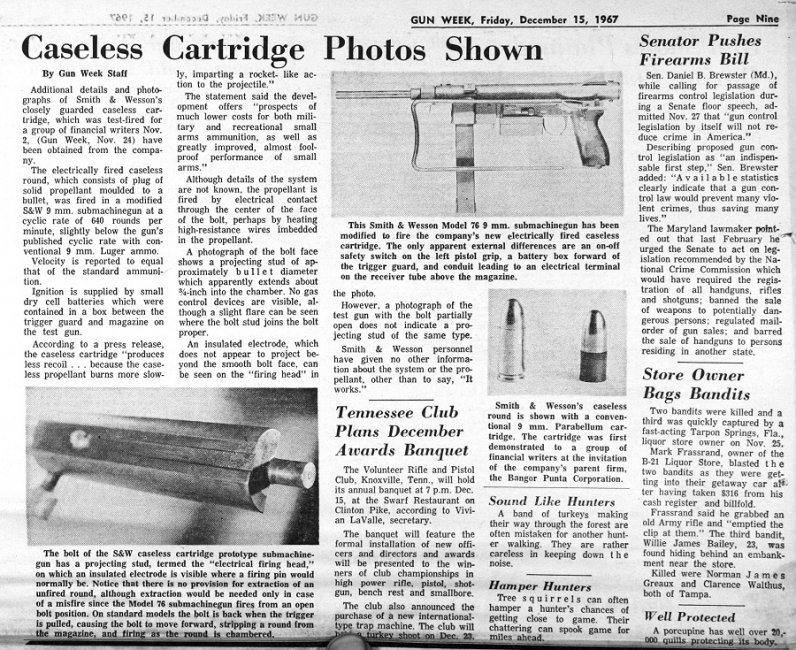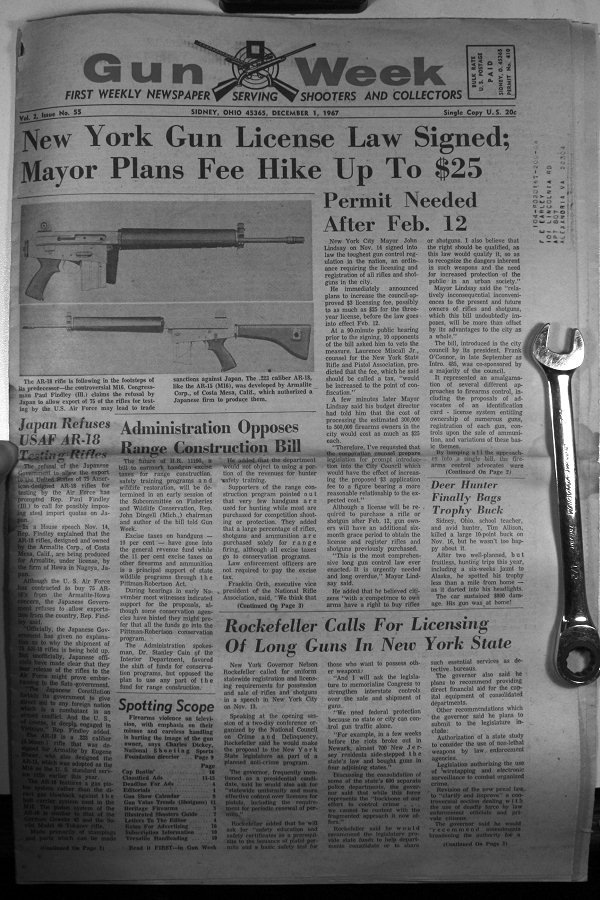For non Maryland-related Gun Control.
If you want MD-related gun control, try these threads:
Stop and Frisk, Baltimore, the DOJ Report, and G&S -- Focuses on the 1972 Mandel Gun Control Bill that created "Good and Substantial" because it invented the "Stop N Frisk for Weapons" concept to Maryland Law as a GC measure. The same concept that has the DOJ up in arms.
MSI fighting G&S circa 1973 -- General MD Gun control thread. Titled that because it started off with a report about a guy in 1973 who got denied a carry permit despite his neighbors all getting murdered.
--------------------------------------------
Let's start this off with a recent one (because of the revelancy to the near-future)
Washington Post Editorial, 10 August 2016
Posted as a thread starter because I read this editorial in the dead tree version one early morning; and as much as I don't want to admit it, HRC has a 50/50 chance of becoming POTUS. So I started this thread off with this to prevent it from being 'memory holed' if that happens.
If you want MD-related gun control, try these threads:
Stop and Frisk, Baltimore, the DOJ Report, and G&S -- Focuses on the 1972 Mandel Gun Control Bill that created "Good and Substantial" because it invented the "Stop N Frisk for Weapons" concept to Maryland Law as a GC measure. The same concept that has the DOJ up in arms.
MSI fighting G&S circa 1973 -- General MD Gun control thread. Titled that because it started off with a report about a guy in 1973 who got denied a carry permit despite his neighbors all getting murdered.
--------------------------------------------
Let's start this off with a recent one (because of the revelancy to the near-future)
Washington Post Editorial, 10 August 2016
The Post's View
No, Hillary Clinton does not want to ‘abolish’ the Second Amendment
By Editorial Board August 10
DONALD TRUMP’S latest on-stage outrage was really two. The one that got the attention this week was his apparent suggestion that “Second Amendment people” rise in an armed insurrection against the federal government if Hillary Clinton wins the election. The second was his premise for the claim: that “Hillary wants to abolish, essentially abolish, the Second Amendment.”
The addition of “essentially” does not render this absurd statement any less absurd. Ms. Clinton plays up her opposition to the National Rifle Association, but her positions are, if anything, too modest.
What Mr. Trump seems to have meant — always a risky way to begin a sentence — is that Ms. Clinton would appoint judges who might scale back the overly broad protections for gun ownership that the Supreme Court has interpreted the Second Amendment to provide. Doing so would not be anything like abolishing an amendment, which no court can do. It would reflect a legitimate legal debate, anchored in the text, on the Second Amendment’s confounding words.
In any case, Ms. Clinton does not appear to be interested in pressing a radical re-interpretation of the Second Amendment. “Gun ownership is part of the fabric of many law-abiding communities,” her fact sheet on gun policy declares. She has endorsed a balance between upholding Americans’ constitutionally protected access to firearms and enacting rudimentary safety measures. What kinds of safety measures? The sorts that, polling indicates, most Americans support.
These center on improving and enhancing background checks. Ms. Clinton would close loopholes that allow many guns to be sold — at shows and over the Internet — unchecked. She would use this more comprehensive background check system to deny weapons to domestic abusers and the dangerously mentally ill, a measure that research indicates could save lives. She would end the practice of allowing gun sales to go through if federal officials do not rapidly complete a background check. And she would ban assault weapons and large-capacity magazines. If these policies sound familiar, that is because they echo and elaborate upon the Brady Bill and other legislation Ms. Clinton’s husband signed during his presidency, during which gun ownership in the United States continued to flourish. Indeed, another key piece of Ms. Clinton’s plan is simply to enforce existing laws more rigorously.
We would argue that the next president should aim to move well beyond this familiar policy template. Decent universal background checks would help, but requiring all gun owners to be properly licensed would help more. As so-called smart-gun technology improves, it may be technically and legally feasible to require fingerprint readers and other safety devices on guns sold in the United States.
The country should be looking for measures that reduce gun deaths without significantly curbing legitimate gun use. That goal does not seem to interest the NRA — or the lobby’s latest mouthpiece, Mr. Trump.
Posted as a thread starter because I read this editorial in the dead tree version one early morning; and as much as I don't want to admit it, HRC has a 50/50 chance of becoming POTUS. So I started this thread off with this to prevent it from being 'memory holed' if that happens.







